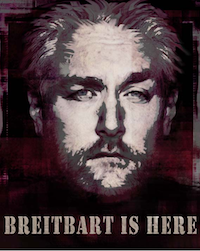Health care: Most wouldn’t have public option
by Carolyn Lochhead
San Francisco Chronicle, Washington Bureau
Thursday, October 29, 2009
10-29) 04:00 PDT Washington – –Senate Majority Leader Harry Reid’s gambit to include a government-run insurance option in health care legislation has given a fresh tailwind to the idea despite opposition from conservatives.
But lost amid the ideological battle for or against a public option is a key overlooked fact: The vast majority of Americans would have no access to a public option even under its most expansive versions.
House and Senate bills limit the option to the smallest businesses and to individuals who cannot get insurance, or whose health care costs exceed 12.5 percent of their income. Even seven years into an overhaul, an estimated 90 percent of Americans, including nearly everyone who has employer-based coverage now, would be shut out of a public option.
Those currently in other government programs, such as Medicare and the Veterans Administration, also would be excluded.
The public option under all bills would be offered through insurance exchanges, a Web-based market for health plans. But most people who are unhappy with the insurance they have now would be locked out of these exchanges, leaving many Americans who are watching the debate in for a big surprise.
Only a handful of senators, such as Ron Wyden, D-Ore., and Mary Landrieu, D-La., have focused on widening the exchanges where a public option might be available. Wyden wants everyone who now has employer-based coverage to have access to the exchange if they don’t like their insurance companies, but his efforts have been lost amid the narrower fixation on the public option itself.
“When you ask people in a poll, ‘Are you in favor of a public option that would be available to everybody,’ they say, ‘Yes,’ ” Wyden said. “I don’t think they’re going to feel the same way about a public option available to only 10 percent of the population.”
Wyden, an iconoclastic liberal, questioned the basic assumption by his fellow Democrats that such a limited public option will provide adequate competition to private insurers.
“People are going to want choices, public choices and private choices, available to everybody, because that’s how you’re going to hold the insurance companies accountable,” he said. “You can’t expect that having 10 percent of the American people getting the public option will force major changes with the other 90 percent who aren’t subjected to choices, public or private.”
He pointed to another surprise that awaits the public: Even those who would have access to a public option may not be able to afford it.
Citing estimates that a family of four earning $66,000 could pay an estimated 19 percent of its income on health care under some bill versions, Wyden said, “I can tell you, Americans are not going to consider 19 percent of their income affordable coverage.”…
…Health care consultant Robert Laszewski, head of Health Policy and Strategy Associates in Washington, said that even if a public option is 25 percent cheaper than a private plan, which averages $13,000 a year for a family of four, it still will cost $10,000 a year.
Under subsidies in the House bill, a family earning $55,000 would pay the first $5,500 of any premium, public or private, he said.
“How many families earning $55,000 a year do you know that have an extra $5,000 in their checking account?” he asked.
Sen. Sheldon Whitehouse, D-R.I., a big advocate of the public option, acknowledged that most people won’t have access to it. The exchanges were kept very narrow, he said, because of the way the Congressional Budget Office analyzes budget costs.
“We have to live with CBO’s numbers and that creates some constraints,” Whitehouse said. “I hope that quickly the public option will begin to demonstrate that those concerns were not justified and those constraints can be lifted and we can extend the option to everybody, because that’s what makes sense.”…
This article continues at SFGate.com
Also from the San Francisco Chronicle, an editorial in this morning’s paper:
Editorial: Public option isn’t much of either
Friday, October 30, 2009
“Most of you all thought the public option was dead,” said Rep. George Miller, D-Martinez. “Rumors of its death were greatly exaggerated.” They were exaggerated, but not by much: the latest House and Senate health care bills have a public option that’s neither public nor an option. Seven years into reform, about 90 percent of Americans still wouldn’t be allowed to get coverage under the public option.
And those who could might not be able to afford it: Even with subsidies, families could wind up paying thousands of dollars per year. Even as House Speaker Nancy Pelosi, D-San Francisco, celebrated the unveiling of her hard-won $894 billion health care package Thursday, it was sobering to think about the details.
First, though, it’s important to acknowledge the significance of the moment. After months of infighting and many missed opportunities, the House is ready to vote on a bill. Not a perfect bill, but a bill that contains a somewhat-public sort-of-option and will extend coverage to at least 35 million people. Pelosi deserves credit for keeping her caucus together long enough to produce even that.
Unfortunately, this may be the happiest moment for a long time. A public option that only covers, at most, 10 percent of the population won’t provide much price competition with private insurers. The House and the Senate still have to agree on who’s going to pay for the plan, and the answer won’t please anyone. The ultimate compromise may have a higher price tag and an even-less-public option.
Stay tuned.
This article appeared on page A – 16 of the San Francisco Chronicle







